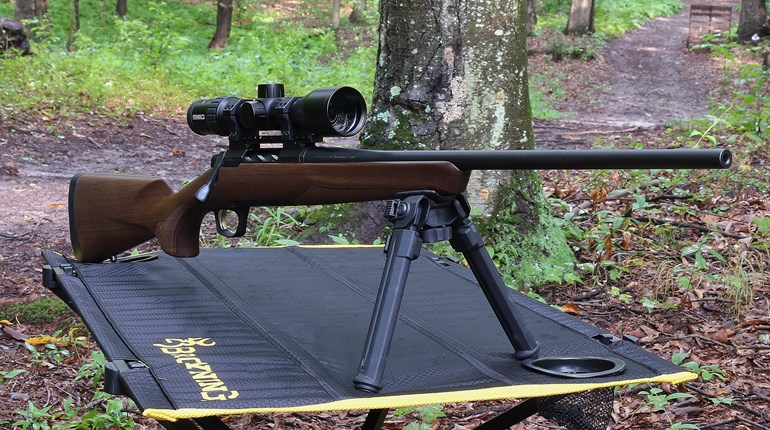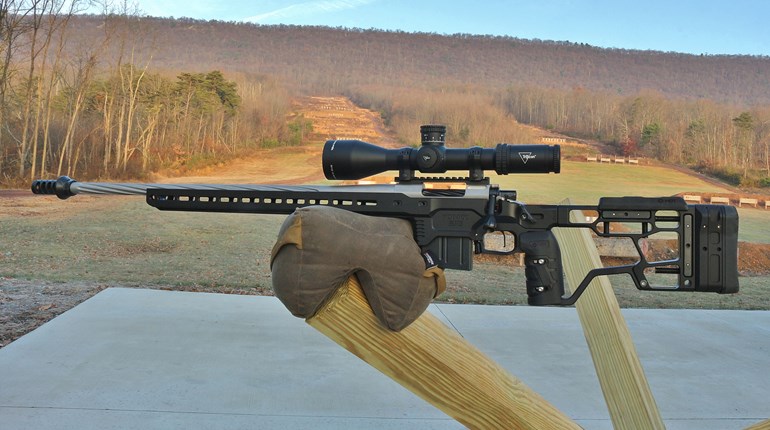
Various .30-cal. cartridges have enjoyed a long run in American riflecraft. Wide popularity dates to the turn of the last century and the advent of smokeless powder, and many versions have done that heritage proud for both warfighters (beginning with the .30-40 Krag) and game getters (from the .30-30 Win. forward).

A veritable host still do yeoman service in practically every venue: .308 Win. (or 7.62x51), .30-’06 Sprg. and .300 Win. Mag. immediately come to mind, though so do somewhat flatter-shooting, softer-recoiling descendants like the .243 Win. and .270 Win. (both of which started life as necked-down .30s). In their turn, these hint at the reasons for our present retrospective tone: A glance over the metaphorical .30-cal. shoulder reveals an upstart gaining fast—Hornady’s 6.5 mm Creedmoor.
If your math and memory are particularly good, this resolves to the .264 class of projectiles and cartridges. Long admired by European shooters, they are not exactly nascent on our shores, though that still leaves the Hornady confection a comparative youngster. The 2007 introduction has proven a somewhat tidal wave-like affair: A compelling swell in somewhat esoteric competitive waters, perhaps, but a crashing—and welcome—monster now that it’s ashore in a broader context.

And as our Bergara B-14 example makes plain, that high-water mark isn’t only to be found on American coastlines. Hailing from northern Spain—traditional Basque country—Bergara barrel craftsmanship is already known to many shooters. The company’s barrel production was set up under the watchful eyes of Ed Shilen, and the barrels boast groove tolerances of .0002 inch. Mated with B-14 actions, they give Bergara a series of complete rifles. Our 6.5 came nestled in a chassis system, the Bergara Match Precision, or BMP. In 11 pounds of graceful, matte aluminum and steel, the package is loaded with well-conceived features.
Actionwise, the rifle is built around a smooth-running, coned bolt nose/breech combination underpinned by Bergara’s in-house adjustable trigger (factory set to a pleasing 3 pounds). Cartridges feed from widely available AICS-style magazines, with a five-rounder supplied, but higher-capacity offerings are widely available and worked well in our tests. The forward-of-the-trigger-guard release is ambidextrous. Up top, the action is sensibly drilled and tapped to accept Remington 700 mounting hardware. Twenty-four inches of free-floated, 1-in-8 twist barrel grace the 6.5, with protected 5/8x24 threads at the business end.
Chassis systems are popular these days, and while they generally add weight over conventional stocks, they also bring high configurability. Bergara’s BMP is of the type, and it has better, trimmer cosmetics than most—to our eye, anyway—without sacrificing purposeful function. Most obvious is a wide range of adjustability for cheek rest, length of pull and butt-pad cant, but don’t miss the QD sling cups (everywhere) or the sling/bipod stud up front.

We’ve heard 6.5s described as “boringly accurate” more than once, and it always made us wince. The precept is a strange one and rare in our experience, but we get it now: Our Bergara routinely produced five-round, half-MOA groups out to 425 yards. Multiple groups at 600 yards stayed well under moa, including a “warmer” of three rounds at a paltry .388 MOA. Nor was this good performance limited to one combination of components. Three Hornady loadings and one Federal exhibited similar precision, and a Remington variety wasn’t far behind (and may have suffered from deteriorating weather conditions and our fatigue).
Gripes never entered the picture for this classy Spanish import. It has all the pleasures of being thoroughly modern in caliber, configuration and just-plain-useful expedients without neglecting the most important rifle quality of all, per Col. Townsend Whelen—accuracy. Even snobs of the .30-caliber have to tip their caps to a rifle as transparently superb as Bergara’s B-14 BMP.
Nuts And Bolts
6.5 Application — We’re routinely annoyed at how difficult it can be to match up rifles with a sufficient variety of ammunition to show either to best advantage. As our range work indicates, the B-14 was a polar opposite and nearly pure pleasure in this sense. The long, slippery, high-ballistic coefficient bullets it employs show every sign of putting a new sort of floor on accuracy expectations in out-of-the-box rifles and ammunition, and such precision is in no way limited to bench-style configurations like the BMP. With proper bullet selection (our local Cabela’s had 14 variations on display), there’s no reason not to consider the 6.5 as a field caliber. We can’t help but note how confidently Bergara suggests the same: Their more traditional Hunter, Ridge, Timber and Woodsman models all come in 6.5 mm Creedmoor, and with the same accuracy spec (“match ammo,” 1 MOA). Ditto the “mini-chassis” HMR, a nifty halfway configuration between bench and field.
We can hardly wait to start handloading for 6.5 mm Creedmoor. With a little help from Redding and Sierra, we’ll report back.
Optic — It’s tempting to leave it at “wow” for our test Meopta ZD 6-24x56 RD. Incredibly clear glass, readably labeled and tactilely positive .25 MOA adjustments accurately presage performance: Boom-ding, boom … ding, boom … … ding. Between the Bergara trigger and barrel, high bullet BCs, and crystalline target views, we started to feel like we couldn’t miss.
Those target views are where the Meopta—and especially its “Mil Dot II” illuminated reticle—particularly shines. There’s lots of data available from anything with mil-dot dimensioning, of course, but the lack of obscuration and visual “noise” in the Meopta compared to many contemporary competitors proved refreshing as well as helpful. Rated by Meopta up to .50 BMG, we expect it’s a rugged, second-focal-plane masterpiece you’ll discover no reason to regret.


































